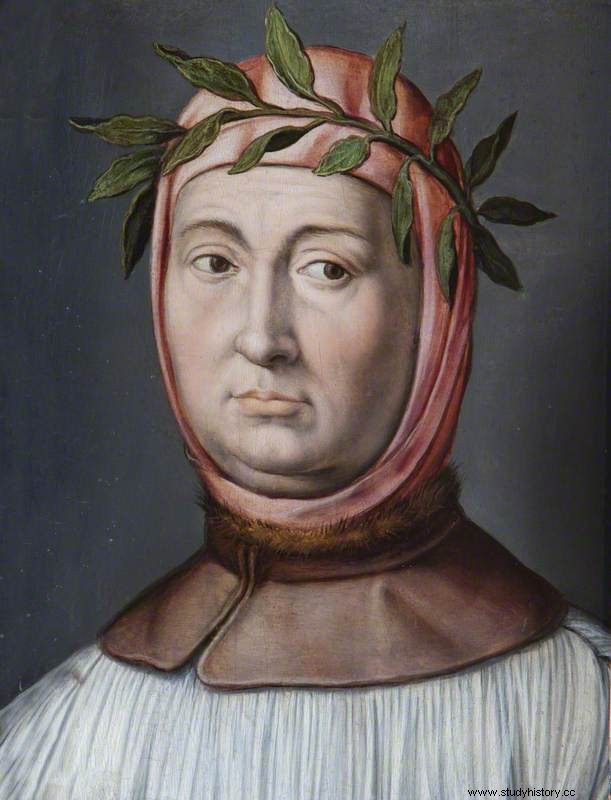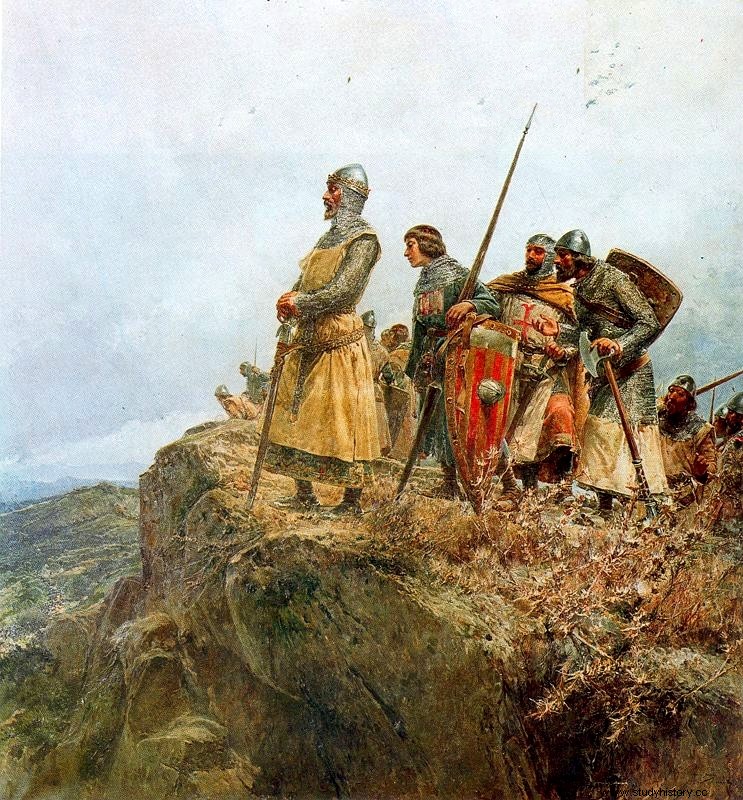Man's relationship with the mountain dates back to ancient times, more because of the fears and respect that the inaccessible heights instilled in the simple eyes of his human neighbors than because of his interest in measuring himself against them in an attempt to climb. There are many historical, literary and mythological testimonies that collect these first attempts at climbing, most of them implausible, poorly contrasted or simply related to the greater glory of their protagonists, normally relevant in their context.
It is said that Petrarch , the Italian poet and humanist, climbed Mont Ventuox , on April 26, 1336, accompanied by his brother and two servants. And the first motivation to climb a mountain “because he did”, “because he was there”, is usually attributed to him, as a way of stimulating his senses and of integrating with nature. And he did so despite the fact that a local pastor tried to talk him out of it, warning him of the difficulties he would encounter. From the top they contemplated the Mediterranean, the Pyrenees and, in the distance to the east, all the majesty of the Alps. That same night, and once happily descended, he wrote a letter to a friend telling him the impressions of him. Some of the sentences in that letter could very well have been written by some of the mountaineering pioneers of the early and mid-20th century. XX:
– Everyone wants to reach the top but to really succeed you have to want it passionately;
– The hardness of the climb is like that which arises from the search for happiness.

Petrarch
It is not surprising that Petrarch has usually been considered the first mountaineer, although his feat may well have been poetic license. But before him there was some background. In his opinion I leave the consideration of whether these adventures can be called "mountaineering." Obviously not, but they are, of course, the first signs of man's relationship with the mountain and the battle that it entails.
Did you appreciate Noah that his voyage aboard the Ark had ended on a mountain over 5,000 meters, Mount Ararat ?
Was it Moses one ahead of his time when he climbed Mount Sinai and he came down with the Tablets of the Law?
Were they the Greek gods accomplished climbers when they walked all day up and down Mount Olympus ?
Shiva and his consort Paruati , main Hindu divinities, lived on top of Mount Kailash for his mountain skills?
Is it the Anábasis of Xenophon the first account of an expedition through the mountainous regions of Asia Minor?
And Hannibal , Carthaginian general of the Second Punic War, was he the first explorer to cross two mountain ranges, the Pyrenees and the Alps, on his way to conquer Rome?
Was it Philip V of Macedon the first expedition leader, when he demanded his troops climb Mount Haemus , in the Balkans, because it was a wonderful vantage point from which to observe an immense territory?
And Caius Crispus Sallustio , Roman historian, noted a Roman legionnaire from Liguria as the first rock climber in recorded history when, in the Numidian campaign, he climbed the cliffs leading to an impregnable fortress and managed to enter without being noticed, thus allowing the Roman army to overcome the square?
Who was the first to climb the crater of the Etna volcano ? A certain Empedocles who threw himself into the lava or the emperor Hadrian , perhaps helped by burly slaves?
Don Pelayo led the first commando of mountain troops in the Picos de Europa during the battle of Covadonga?
But if we ignore these fabulous events and characters, all of them surrounded by the fog of fragmentary chronicles or religious beliefs, we find a case that could be considered, several decades before Petrarch, as the first intentional encounter of a man with a mountain. And it is none other than the rise of Peter III «the great « , King of Aragon, son of Jaime I «the conqueror « , to Mount Canigó (2,784 meters) in 1285.

Pedro III the Great at the Collado de las Panizas
For centuries, the Canigó It was considered the highest mountain in the Pyrenees due to its enormous size compared to its neighbors and, above all, because other mountain massifs were hidden from human eyes and historical chronicles. The thing is that after returning from a political-military campaign in the Roussillon area, he saw the imposing silhouette of the Canigó and he decided that it would be well to put his foot on the summit, perhaps as a way of likening the magnificence of the mountain to his own. We owe the chronicle of how the events should have happened to Selimbene de Parma . Apparently, Pedro III undertook the ascent together with two gentlemen, dressed as befitted the time. But after a certain moment, the solo ascent continues, so when he reaches the top he becomes, not only the first historical figure of whom there is documentary evidence of an ascent to a mountain, but he was also the first to do it solo. The description of what he saw and did on the summit seems more taken from a modern fantastic saga than from a true reliable account (which was so little styled then, on the other hand). At the top he found a lake of deep, dark waters from which emerged a dragon with fetid breath, with which he fought in single combat and, of course, defeated.
We do not know how much is real in this story; well, it is possible to know, rather little:there is no lake at the top or in the whole mountain an extension of water capable of housing such a magnificent creature; it is taken for granted that he did not reach the top, although that term should not be interpreted with our current perspective but with the way of thinking and understanding of the Middle Ages. But one thing is certain:Peter III «the great» was the first man who wanted to climb to the top of a mountain without any specific reason:there was no military or religious need for it; just the desire to climb. What physical effort such a feat entailed for the monarch we do not know, but we do know that the good Pedro III "The Great" died that same year of 1285.
Collaboration Rafael Ballesteros of IMBALANCES
To find out more:Petrarch did not climb Mont-Ventoux. Agustin Faus; History of mountaineering. Mountains and men . Ed. Slope. 2003
